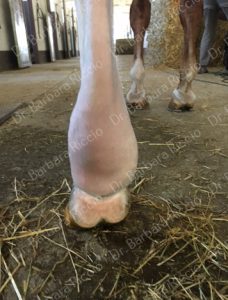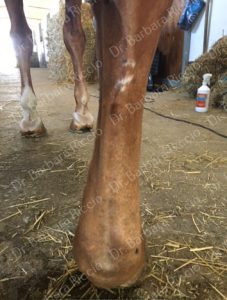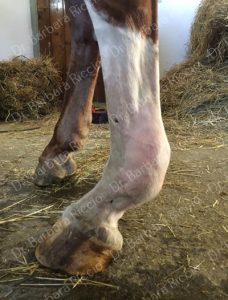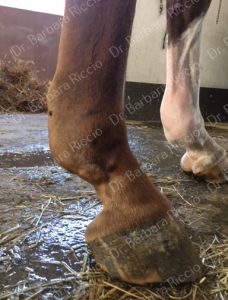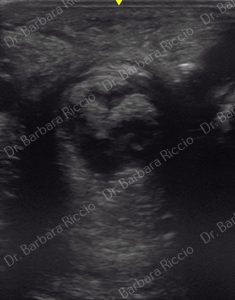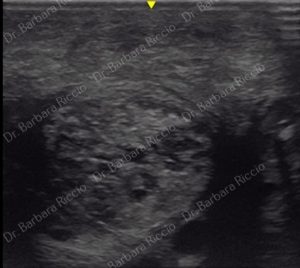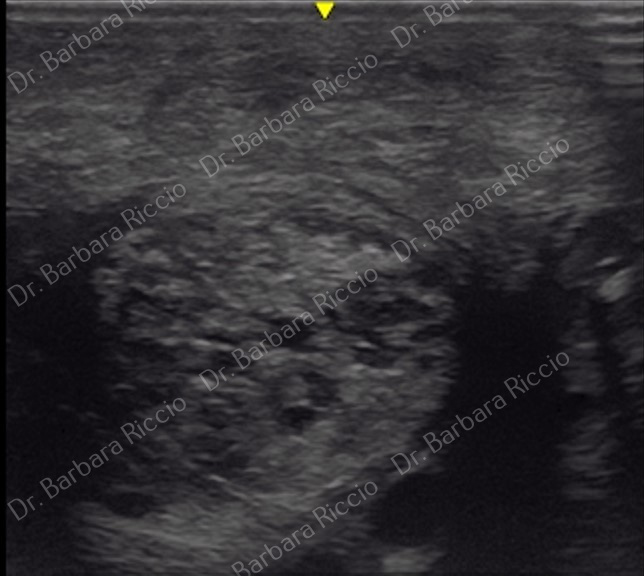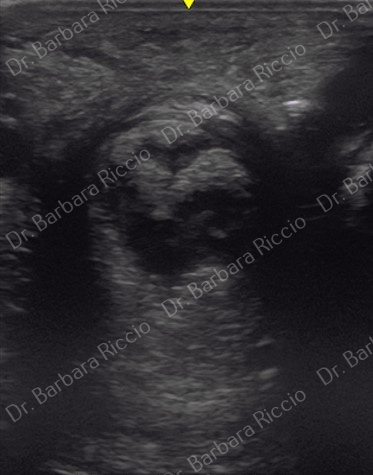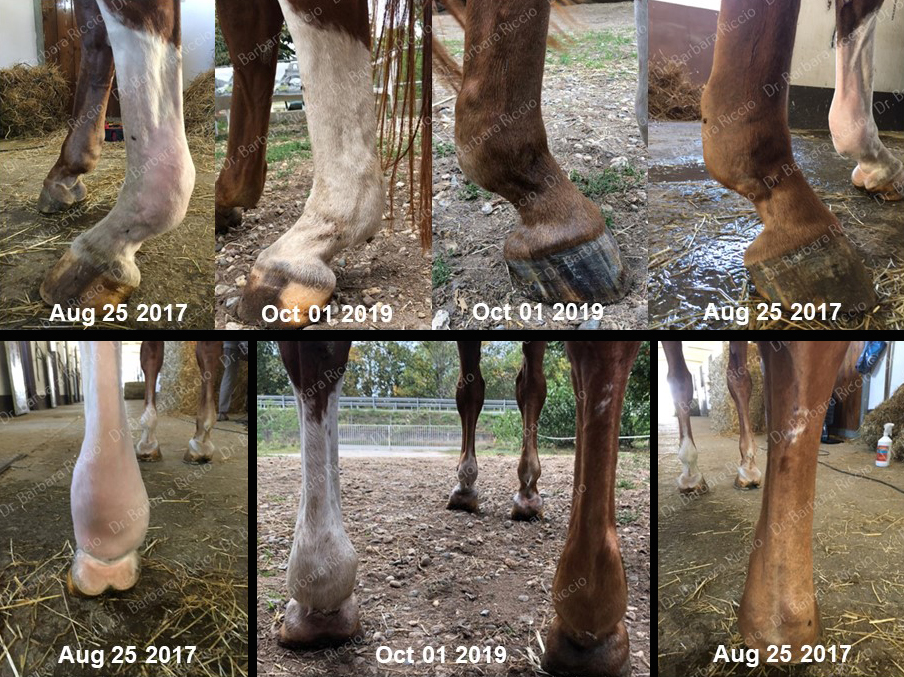Barbara Riccio
DVM, PhD, ISELP cert, DACVSMR, DECVSMR
16th WEVA Congress – Verona, Italy – October 3-5, 2019



Mare born in 1998 – retired (stable with small paddock)
2014: first injury at right hindlimb suspensory ligament branches; stop competition and retired (stable-paddock)
- Progressive bilateral degeneration on both hindlimbs suspensory ligaments (SL)
- Progressive enlargement of SL branches and body, inflammation and pain
- Lack of fetlock extension in both hindlimbs
- Suffering mare often laying on the ground
- Chronic hindlimb lameness with episodes of severe exacerbation
- Farrier has difficulties to trim the feet
August 25 2017: severe worsening
- Mare laying down all day
- Severe bilateral hindlimb lameness with worsening / lack of fetlock extension
- No improvement with ice and systemic AINS
- Impossible to lift rear feet
- Ultrasound examination shows severe desmitis of SL branches and body
- Emergency situation: hospitalization for 1 month
- 10 low frequency ultrasound therapy treatments (3 per week for 2 weeks, then 2 per week for 2 weeks)
1 MONTH LATER
September 30 2017
- Clinical and ultrasound check
- Mare never laying down during the day
- Improvement in hindlimb lameness
- She recovered her temperament!
- Decrease in size of suspensory ligament branches and body
- Decrease of inflammation and pain
The 2-years follow-up shows good outcome of low frequency ultrasound therapy.
Since September 2017 the mare never presented pain or recurrence of suspensory ligament desmitis.
Update: this mare died on March 2020 for EHV1 neurological disease.
